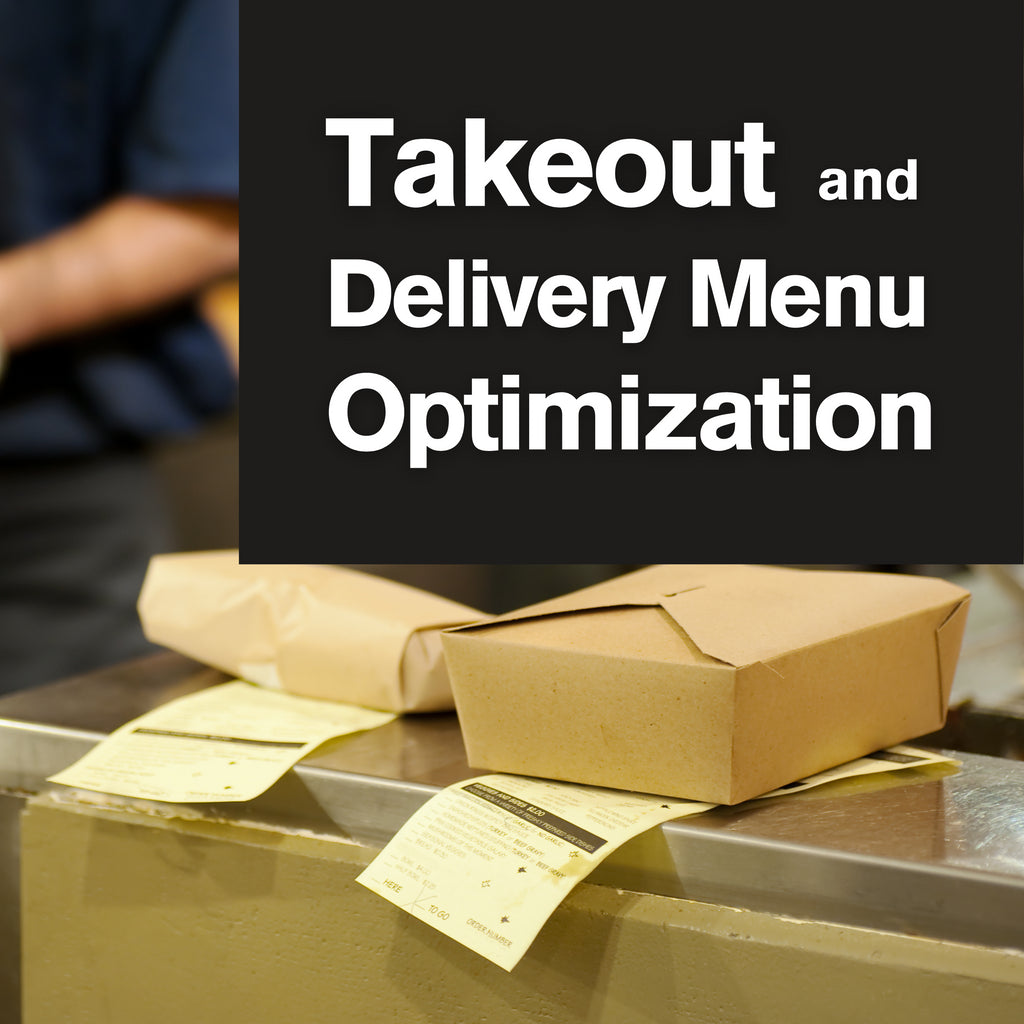Takeout and Delivery Menu Optimization
Posted by JENNIFER TUMILTY

Even before the pandemic, takeout was big business in the food and beverage industry. But with COVID-19 restrictions and the growth of delivery platforms, the takeout trend has exploded over the few years. All indications are that off-premise dining will only continue to grow—in fact, studies suggest that it will grow by as much as 10 percent a year over the next few years. That’s a whole lot of clamshells. Working on your takeout and delivery menu optimization just makes sense (and cents).
But not every dish is ready for its moment in the back of a delivery vehicle or insulated delivery bag on a bike. Here’s how to optimize your takeout and delivery menu.

1. Design an appetizing menu
Your menu is your marketing tool. It should reflect your restaurant’s brand, tantalize your customers and, at the same time, be as functional as possible.
Post your menu on your restaurant website and make it easy to use by, if possible, allowing customers to order and pay directly online, or link to delivery options if they are available.
Keep your takeout menu short and simple. The most successful menus on third-party booking platforms are 15 to 20 items long, with short, snappy descriptions and items broken into categories.
Make it look appealing with good food photos that are a realistic representation of each dish. You don’t need a fancy camera—most phones can take appetizing pictures. Just pay attention to presentation, composition and lighting (natural is usually best), and if possible, incorporate your restaurant’s esthetic or branding in the photos. And never use generic stock images.

2. Offer the right food and drink
Remember: Not everything on your regular menu needs to be on your takeout menu. Before you offer your signature dish to go, ask yourself: Will it travel well? Will it be a soggy mess by the time it gets to its destination? Is it too complicated for the home cook to assemble? Does it take too long for your staff to prep?
Some of the most takeout- and delivery-friendly dishes include: pizza, burgers, sandwiches and wraps, sushi rolls, curries, fried chicken and Chinese food, as well as prepped meals like lasagna or soup that customers can keep in the freezer.
Other dishes may only require a few tweaks or last-minute assembly to make them ready for delivery, for instance, by placing the ingredients for pho in separate bowls or cooking pasta al dente so it doesn’t get mushy. Also consider family-style meals that comprise starters, mains, sides and desserts. This is especially effective for holiday feasts, and is a good way to cut down on packaging waste.
And don’t forget the beverages. If you live in a jurisdiction that allows alcohol delivery, beer, wine and cocktail kits make a welcome (and profitable) add-on. If you don’t, consider mocktails and mixers that customers can top up with spirits at home.
3. Package it properly
What you package your food in matters as much as the food itself. And that means more than just using transport-friendly takeout containers.
Choose containers as close to the size of the food inside them as possible, so it doesn’t get damaged in transit. Soup should be in leakproof containers, while containers for fried food should have vents to keep condensation from forming and making things soggy. Hot and cold items should be kept in separate bags. Sauces, dressings and broths should be in separate containers
Packaging is also an opportunity to promote your brand by printing your logo on boxes and bags. And by choosing recyclable, compostable and/or reusable materials, you can reduce waste and promote responsible leadership.

4. Efficiency is essential
Customers are impatient at the best of times and these are far from the best of times. Studies show that speed is the biggest concern when it comes to off-premise dining, and some 27 per cent of customers who are disappointed by a takeout experience will never frequent that restaurant again. That means it’s essential to make your operation efficient on every level.
Update your menu regularly. Assign a staff member to update the online menu in real time so customers won’t be disappointed by a menu item that is no longer available.
Plan for prep and delivery times. If a dish takes 20 minutes to prep and 40 to deliver, that’s a long wait for a hangry customer, so consider a smaller delivery radius and dishes that can be prepped in advance. Create an assembly team that includes someone who checks each order before it goes out the door.

Take advantage of technology. Comprehensive kitchen display systems can bring together all the efficiencies of a restaurant’s point-of-sale (POS) system, website and mobile apps. They can even pre-set cooking times and alert kitchen staff about issues concerning orders.
Finally, one of the best ways to keep your restaurant in your customers’ minds is to communicate frequently—and thoughtfully—on social media. That includes reassuring people about COVID protocols as well as your daily specials. And then watch your takeout take off.
Written by Joanne Sasvari

